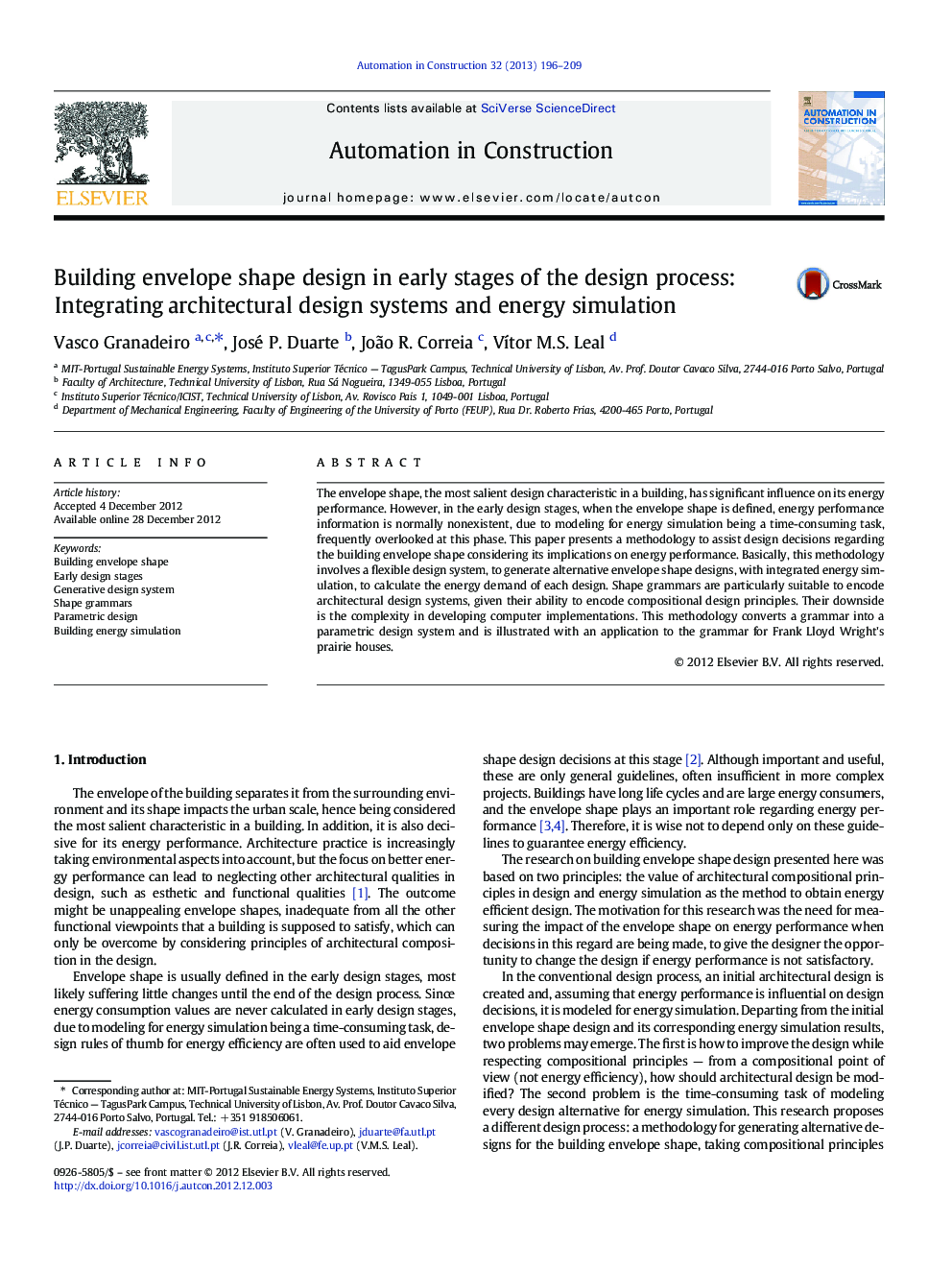| Article ID | Journal | Published Year | Pages | File Type |
|---|---|---|---|---|
| 246703 | Automation in Construction | 2013 | 14 Pages |
The envelope shape, the most salient design characteristic in a building, has significant influence on its energy performance. However, in the early design stages, when the envelope shape is defined, energy performance information is normally nonexistent, due to modeling for energy simulation being a time-consuming task, frequently overlooked at this phase. This paper presents a methodology to assist design decisions regarding the building envelope shape considering its implications on energy performance. Basically, this methodology involves a flexible design system, to generate alternative envelope shape designs, with integrated energy simulation, to calculate the energy demand of each design. Shape grammars are particularly suitable to encode architectural design systems, given their ability to encode compositional design principles. Their downside is the complexity in developing computer implementations. This methodology converts a grammar into a parametric design system and is illustrated with an application to the grammar for Frank Lloyd Wright's prairie houses.
► Both geometry and energy performance influence building shape design decisions. ► The proposed solution is to integrate energy simulation in design systems. ► A methodology was created and applied to an existing shape grammar design system. ► Building shape design alternatives are shown, with different energy demand values. ► The energy performance data is crucial to decide between the design alternatives.
